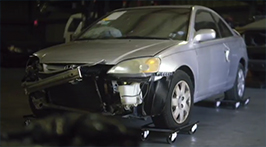Lightning Statistics
Lightning strikes can happen at any time without warning if a thunderstorm is in the area, even if rainfall and storm clouds are as far as 10 miles away. In the U.S., an estimated 25 million lightning strikes are recorded each year, with 58 people killed by lightning and about 300 people injured annually from the strikes.
A typical lightning strike can deliver up to 125 million volts of electricity, heating the air around the bolt to more than 40,000 degrees Fahrenheit. A lightning strike’s effects on the body can be permanent, with injuries including memory loss, attention deficit problems, sleep disorders, chronic pain, numbness, dizziness, joint stiffness, irritability, fatigue, weakness, muscle spasms, depression, and chronic restlessness.
The majority of lightning strikes and thunderstorms occur in the spring and summer months, but it is important to be cautious of lightning dangers year-round, especially when engaging in outdoor activities such as golfing, boating, camping, gardening, or playing sports.
Preparing for Lightning
There are some things you can do before a thunderstorm hits to lessen your chances of being struck by lightning. The following tips can help prepare you and your family for the storm:
- Be alert for developing thunderstorms, darkening skies, or towering cumulus clouds
- Install ground fault protectors on outdoor circuits or on circuits near water
- Use surge protectors on important electrical equipment in the household
- Unplug electrical items to protect them from damage during severe storms
Lightning Safety Tips During the Storm
When a thunderstorm is in the area, keep the following tips in mind to reduce your risk of lightning injuries and death:
- As soon as you hear thunder, stop outdoor activities and seek shelter indoors or in a vehicle
- Avoid trees, car ports, baseball dugouts, sheds, greenhouses, tents, golf shelters, beach pavilions, patios, golf carts, convertibles, or open garages
- Avoid corded phones, computers, and other electrical equipment
- Do not touch bathtubs, showers, pools (indoor or outdoor), or other water sources and plumbing
- Wait at least 30 minutes after the last clap of thunder before going back outside
- Perform CPR and seek emergency medical attention immediately for anyone who has been struck by lightning
Sources:
